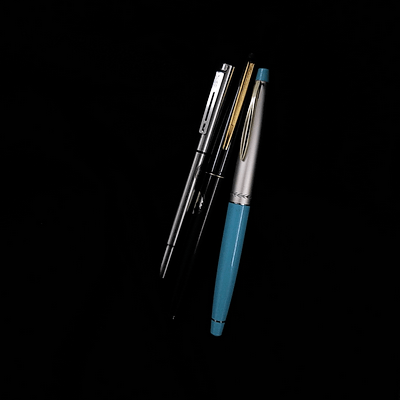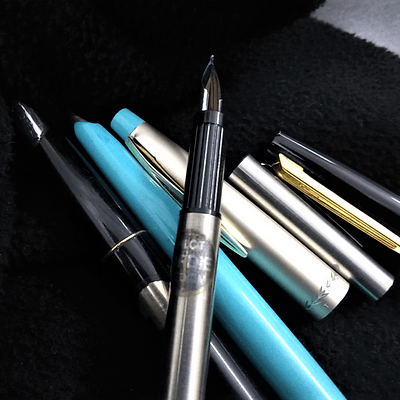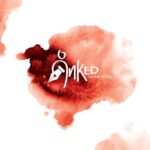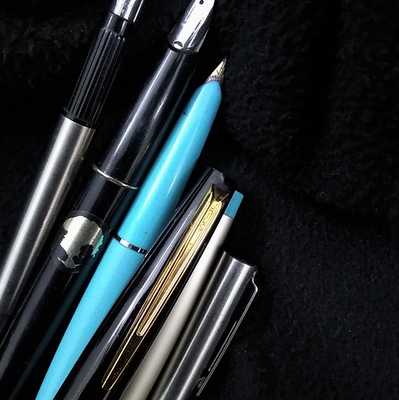Pilot Fountain Pens my father bought: someday, they’ll put my son’s thoughts on paper
The shopkeeper would through a steel-nibbed Japanese Pilot pen on the counter, and like a dart, the pen would stick to the wood, proving conclusively to the awe-struck customers the superior quality of the steel nib in particular, and the robustness of the Pilot pens in general. I haven’t witnessed this phenomenon, but I have heard my father recount such an incident justifying his lifelong affinity for Pilot pens. Apparently, he was looking for a pen for his daily use – and we are talking about late 1960’s and the early 1970’s here – something that would neither fail him with a blotch, nor a broken nib during work and had settled for the Pilot, obviously impressed by the steel nib, enough to be weaned away from the gold nibs that were then the norm.

And now we have come to the fag end on 2018 – and this is the 100th anniversary year of Pilot – my father is not with us any more, but his Pilot pens, still write with the same consistent excellence with which they had done in his hand, having served him through the long and exacting routines he had put them into over long arduous years. They don’t look like the buffed beauties that the display boxes in stationary shops are rife with – shining pieces of art radiating innocent, virgin beauty. Rather, they are wrinkled with age; their weather-beaten profiles; the laugh lines when they flash their smiles of approval; their nibs exhibiting a softness that is reminiscent of the lover who had taken good care; the eroded surfaces where they had rested on the middle finger, where the thumb and the forefinger gripped them – all telling tales that may mean little to the world, but are a world in themselves to me. And if there is a pleasure that is even greater than that, then it is the sheer act of writing with them. Suffice to say, some joys are indeed, forever!

At the beginning of the year I had told myself that I will relive my father’s passion on this, the hundredth year of Pilot pens, with a Special Edition, or at the least with a Namiki, a tribute to the art of the heights of penmanship by Pilot, one of the most revered names in the world of pens. The Namiki Fuji Emperor Fountain pen (100th Anniversary Limited Edition) was the one that I ogled at and seriously prayed for a miracle so that I could lay my hands on by the end of the year without robbing a bank. But the miracle did not happen and now even as I hope against hope, the chances of me possessing one is really slim.
The Seven Gods of Good Fortune Set, limited to only 25 sets word wide, brought about to mark the Pilot Anniversary was also something that was high on the wish list that I sent to myself. The Sets come with seven Taka-Maki-e (Raised Maki-e) Fountain Pens, stylised after the Seven Gods of good fortune. Also, each set comes with seven bottles of ink, in seven colours, tailored to the impressions given by each of “Gods of Good Fortune”. The bottled inks come enclosed in an exclusive box together with the seven fountain pens. The sets also include a pen tray on which a crane and a turtle, symbolising longevity, come depicted in Togidashi Maki-e (Burnished Maki-e). The box that the set is enclosed in, is finished in Maki-e and Chinkin. To cut a long story short, I failed to earn enough to splurge myself with the set either, which I honestly feel was way beyond my grasp in any case.
What is worse, 2019 is the hundredth anniversary of another legendary pen maker from Japan, Platinum.
I guess I will do what I do best – nurture my love (and unsatiated desire for a Namiki) in the most sacred chambers of my heart and continue to work towards achieving my goal. And till then, I will keep myself busy performing the next best task – write the Pilots dry, only to ink them up again. And again, and again.
Yes, I am looking forward to the year of the Platinum, three of my beloved Pilots inked and ready to write-in a new dawn! Happy New Year, everyone. May all your pen wishes come true and may the inks never dry out!

